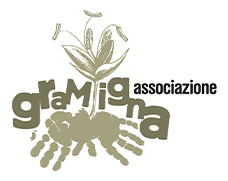EURECA
Good Practices
Flower meadows in Białystok, Poland.
Photos by Piotr Znaniecki.
Flower meadow in the city.
Country:Main Subject:
Description:
In Bialystok, Poland, starting in 2019. The City Council is establishing flower meadows in place of traditional lawns or leaving green areas unmowed. Such a measure has an ecological, aesthetic and social dimension.
"We wanted to introduce modern methods of maintaining greenery in road lanes - and at the same time environmentally friendly: improve biodiversity, mitigate the effects of so-called heat islands and locally improve the microclimate. Well, and beautify our city. It was important to choose the right composition of seed mixtures, as well as the period and intensity of flowering and drought resistance. We also tried to make the plants attractive to visiting insects. We cared about the micro retention of rain, as well as cleaning the air of harmful PM10 and PM2.5″ particulates. - says the Bialystok City Hall employee responsible for greenery. The deputy mayor adds, "Last year, 2022, the area of Bialystok's floral meadows occupied more than 8 hectares, this year it will expand by another more than 2 hectares. So we are exceeding the goal set at the beginning, which is 10 hectares of meadows in Bialystok. This year it will be almost 11 hectares. We are also increasing to 50 hectares the area of green spaces that are not mowed throughout the growing season. Last year it was about 36 hectares. We are taking these and other such measures for the sake of Bialystok's biodiversity and environmental protection."
Bialystok's meadows are very diverse and serve many functions. Multicolored perennial meadows occupy 25% of the total area, antismog perennial meadows - 6%, butterfly-friendly annual meadows - 17%, antismog annual meadows - 36%, sunflower fields - 6%, the remaining area other flowering species.
Nature benefits most from the floral revolution - beneficial pollinators, urban birds and other small animals. Residents gain beautiful spaces and contact with nature, while taking care of clean air and combating climate change.
Flower meadows reduce the cost of maintaining green spaces, primarily by reducing mowing and watering. The meadow is mowed a maximum of twice a year. This saves not only money and time, but also health. After all, a growing number of studies speak of the high harmfulness of unfiltered exhaust fumes from the engines of lawnmowers and combustion blowers.
Flower meadows also have a promotional dimension - they are readily described by the media, through which they positively advertise the city, its authorities and residents
Reference links:
https://laka.org.pl/laka-kwietna/bialostockie-laki-kwietne/
https://www.google.com/maps/d/viewer?ll=53.13471207702078%2C23.1340574650685&z=14&mid=15DOZzWRsBEmn201DU5lv4hzawDciJ_A
https://lakikwietne.pl/laki-bialystok/
https://www.teraz-srodowisko.pl/aktualnosci/zielen-miejska-laki-kwietne-fakty-mity-10684.html
SDG direct/ indirect short justification:
Direct SGDs:
- Goal 11. Sustainable cities and communities.
Justification:
The action meets the target 11.7 of SDG 11: By 2030, provide universal access to safe, inclusive and accessible, green and public spaces, in particular for women and children, older persons and persons with disabilities.
Keywords:
City:
Questions:
- What are advantages and disadwantages of flower meadows in the city?
- What kind of environmental hazards does the flower meadow mitigates?
- Why it is better not to cut grass?
Authors:
Piotr Znaniecki
Fundacja SocLab




